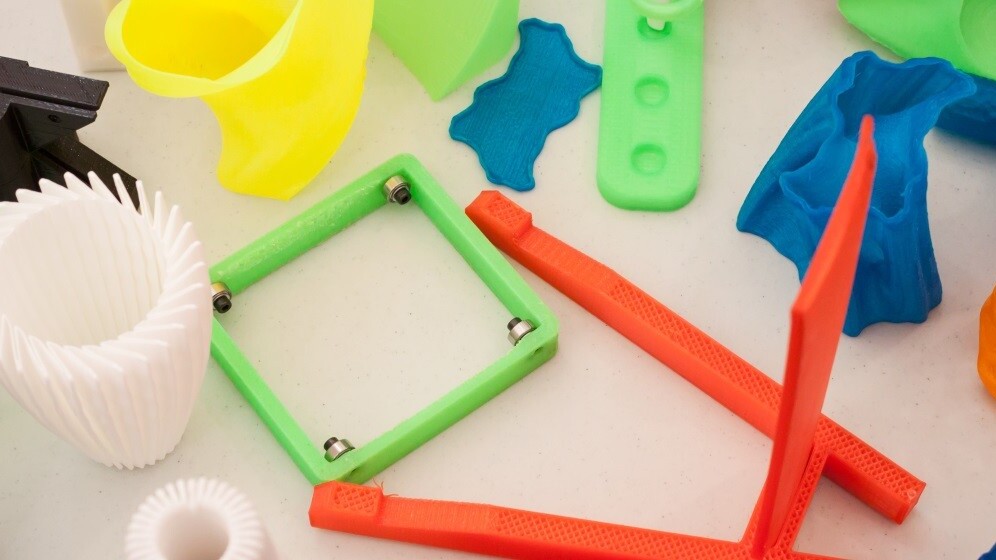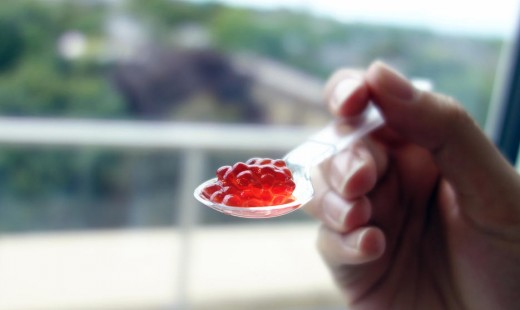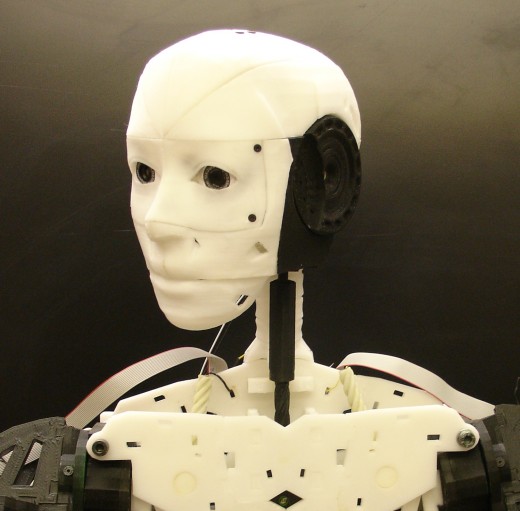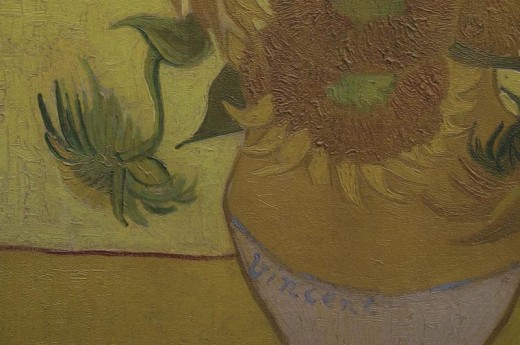
Rudy de Waele is a Technology Innovation Strategist and Author/Curator of Shift 2020.
The first time I saw a 3D-printer in action was when I participated to the Singularity University Executive Program in the spring of 2011. It was a place that offered corporate executives and entrepreneurs the tools to predict and evaluate how emerging technologies will disrupt and transform their industries, companies, careers and lives.
Since then, I have been following the explosion of 3D-printing products and services closely and it’s an integral part in most of my talks for clients and at conferences.
During the program we visited TechShop; there, we experimented with miniature 3D modeling, as well as the Autodesk offices in San Francisco. Those visits really blew my mind as I realized the broad possibilities of use and the impact 3D printing could have in many different sectors. It was incredible to see last week at the 3D-printshow in London how this industry has grown in just three years’ time.
A growing ecosystem
Everyday, more people have access to 3D-printing technology thanks to the open-source hardware DIY clubs, hacker and maker spaces and Maker Faires that popping up in cities around the globe. Good international examples are Wevolver in London and Amsterdam, the FabLabs, and the more recently, the 3D Hubs network, which grew from connecting a couple of hundred 3D-printers to more than 7,000 in less than a year’s time.
Easy access to top class 3D modeling and design apps and software like 123D Design (available for PC or Mac, iPhone and iPad or through a Web application) makes it accessible for many people to start printing in 3D in their own neighborhood.
More 3D-printing marketplaces and Service Centers are being opened everywhere by entrepreneurs betting on a lucrative market to explode the next years. Shapeways and Maker6 are pioneers in this area in the US, while iMaterialise is well-known in Europe (Belgium).
Some of the big players are already positioning towards a 3D-printing consumer boom as well, such as the recently launched Amazon’s 3D-printing Store or the UPS Store’s in the US.
Better materials
Today, approximately 40 manufacturers sell the 3D-printers most commonly used in businesses, and over 200 startups worldwide are developing and selling consumer-oriented 3D-printers, priced from just a few hundred dollars.
More variety of materials are becoming available for printing – from different types of wax or plastic, ceramics, to metals like steel, brass, bronze, silver, gold and platinum.
Next: A rundown of interesting 3D-printing industries
Some interesting 3D-printing areas
Robotics
Initiated in January 2012, French model maker and sculptor Gael Langevin created “InMoov,” the first life-size humanoid robot you can 3D-print and animate. Replicable on any home 3D-printer with a 12 x 12 x 12 cm area, it is conceived as a development platform for Universities, Laboratories, Hobbyist, but first of all for Makers.
Earlier this year, Intel launched Jimmy, a friendly walking robot that Intel is designing for consumers. Intel describes Jimmy as a research robot, but a less sophisticated version of the adorable droid will go on sale later this year for $1,600.
The caveat is that you will have to 3D-print your Jimmy. The 3D-printing blueprints will be available without charge, but to construct the robot you will also need to purchase a kit from Intel that will contain all the parts of Jimmy that aren’t printable, including motors and an Intel Edison processor. Intel is hoping to bring the price of the robot down to under $1,000 as soon as possible.
Architecture
Contour Crafting is a layered fabrication technology developed by Dr. Behrokh Khoshnevis of the University of Southern California. Contour Crafting technology has great potential for automating the construction of whole structures as well as sub-components.
Using this process, a single house or a colony of houses, each with possibly a different design, may be automatically constructed in a single run, embedded in each house all the conduits for electrical, plumbing and air-conditioning.
Earlier this year, WinSun Decoration Design Engineering, a Chinese company, harnessed 3D-printing technology to build 10 one-story houses in a day – a cheaper, faster and safer alternative to more traditional construction methods.
The houses were built in Shanghai using four giant 3D-printers, which are each 10 meters wide and 6.6 meters high. They produce a mix of cement and construction waste to construct the walls layer by layer, a process much like how a baker might ice a cake. Such a new type of 3D-printed structure is environment-friendly and cost-effective.
D-Shape in the UK is specializing in Freeform Architectural 3D printing. The company can print any feature that can be enveloped into a cube 6×6 meters side. This can be used for printing single-handed bus stops; park benches/seats; kiosks; colored marble effect pavements; fountains, small swimming pools, furniture, playground elements for playgrounds and kindergarten, and so on…
Lastly, Emerging Objects realizes that the use of 3D printing is not limited to only creating the exterior support of buildings. In fact, it have decided to focus mostly on the interior construction and design aspects of buildings.
The company prints the components that are used in the process, using both renewable and innovative materials, such as a cement polymer as well as a salt polymer that Emerging Objects refers to as Saltygloo.

Design
Studio Eric Klarenbeek in Amsterdam is exploring ways of 3D-printing living organisms, such as mycelium, the threadlike network of fungi, in combination with local raw materials to create products such as the Mycelium Chair with a negative carbon footprint.
“We are the first in the world to 3D-print living mycelium, using this infinite natural source of organisms as living glue for binding organic waste,”says Eric Klarenbeek. “Once it’s full-grown and dried, it turns into a structural, stable and renewable material. Combined with 3D-printing it gives us tremendous design freedom.”
Fashion
Many fashion designers are currently experimenting with 3D-printed fashion wear going from hats, headpieces to dresses, shoes and jewelry. Some interesting designs have been created by Iris van Herpen. Last year, Bradley Rothenberg dreamed up a corset with matching wings for the Victoria’s Secret Fashion Show.

Invisible Light Network creates “Nu” bracelets that are inspired by sound. Nervous System, a design studio in Boston, has released a jewelry collection and accompanying app for desktop 3D-printers. A hinge mechanism in the design means no assembly is required.
London-based designer Silvia Weidenbach creates necklaces using 3-D printing techniques combining traditional artisan and craft skills: “ t is through my understanding and use of both that I discovers new forms of expression,” she says.
The Nike Vapor HyperAgility Cleat, built for the shuttle drill, has taken innovation and athlete agility to a new level. In the quest to help make athletes better, Nike is accelerating the footwear manufacturing process through 3D printing technology.
The Mink 3D-printer lets users choose any colour on the web, or in the real world, and using simple already-existing software, print that colour into a blush, eye shadow, lip-gloss or any other type of makeup. The company is targeting the younger, 13-21 demographic who are less ingrained in their habits with certain brands and retailers.
Automotive
The use of 3D printing in the last James Bond’s movie Skyfall was already a sign of the growing adoption what can be done using the technology with cars in entertainment.
Car manufacturers today are using 3D printing mainly to research and experiment with their concept cars. Designer Erik Melldahl, has teamed up with BMW to introduce the 3D printable Maasaica car with biodegradable materials, and London-based designer Nir Siegel has proposed with Audi the radical idea of a 3D printed car that would assemble itself in front of the buyer.
The concept, entitled ‘genesis,’ utilizes a robotic 3D printer that comes in a monolithic box – ready for assembly.
However, for its next ten 2018 S-Class, Mercedes has announced it is considering introducing 3D parts, not just for the concept models but for final production of interior trim pieces.
Worth noticing also is that workers at a BMW plant in Germany have been given 3D-printed “super-thumbs” to reduce stress on their joints when they are assembling car parts.
In a farfetched future, we may imagine to 3D-print our own car and download the Google self-driving car OS to hit the road J
Entertainment
Earlier this year, Marvel studio partnered with 3DplusMe at the San Diego Comic Conference and showcased its unique printer that scans your facial features and will then print you as a Marvel superhero of your choice.
More of this personalized, branded superhero characters will come to market for sure as it’s a great tool for brands to engage with customers.
Art
There is a lot of mind-blowing 3D-printed art and sculptures exhibited and accessible on the Web. In this article, I wanted to focus on a 3D printing project the Van Gogh Museum has been developing in cooperation with Fujifilm in Belgium.
The product resulting from this cooperation is called Relievo, a premium three-dimensional replica of Van Gogh masterpieces. The originals are recreated in size, colour, brightness and texture to achieve an ultimate fine-art reproduction.
The “Sunflowers” Relievo for example captures the direction and relief of Van Gogh’s brushstrokes, and its 32 shades of yellow. The museum sells the reproductions for $34,000 each.
Food
One of the most exciting areas in 3D printing is the printing of food. The last year we’ve seen an explosion of 3D “food” printers coming to life like the Foodini or the Candy often funded by the crowds. By changing form, color and taste, 3D Systems developed Sugar Labs, to experiment with new ways how to consume sugar and cakes. Choc Edge does the same with 3D-printed chocolate.
Italy-based pasta maker Barilla plans to equip every restaurant with 3D food printers in a few years. Customers could then get their own designed 3D printed pasta on the plate in a few minutes. Barilla is working with TNO Eindhoven in the Netherlands to make this happen.
However, there is more at stake than the attraction of some gimmicky type of food printers. The introduction of science and technology in the kitchen, also called molecular gastronomy, may revolutionise the way we eat and prepare food in the future.
Cambridge-based startup Dovetailed unveiled its 3D Fruit Printer to print fruit on demand using a molecular-gastronomy technique called specification. By combining individual liquid droplets with different flavors into a desired shape, it allows the creation of interesting bespoke fruits in a matter of seconds.
The tech is aimed at chefs, foodies and anyone interested in making creative dining experiences. No specialist knowledge of cuisine or molecular-gastronomy is required, to rapidly create fresh and organic 3D fruits on demand.

Health
One of the obvious uses today in healthcare is the 3D printing of bone and cartilage replacements and medical devices. Much progress is made in this area and many hospitals are now implementing this technology for their day-to-day work.
Earlier this year, neurosurgeons successfully implanted a 3D-printed skull in the University Medical Centre in Utrecht.
Lawrence Bonassar, associate professor of biomedical engineering, and colleagues collaborated with Weill Cornell Medical College physicians to create an artificial ear using 3-D printing and injectable molds. Scientists at Princeton University used off-the-shelf printing tools to create a functional ‘bionic’ ear that can “hear” radio frequencies far beyond the range of normal human capability.
Organovo claims that it will have a 3D printed liver sometime this year. Researchers are already printing out dozens of different biological cells. Once a method of printing vascular networks within these organs can be perfected, the amount of innovation within the field will be explosive. The field of medicine will look entirely different by the end of this decade.
Physicians and scientists at the Wake Forest Institute for Regenerative Medicine were the first in the world to engineer laboratory-grown organs that were successfully implanted into humans. Today, this interdisciplinary team is working to engineer more than 30 different replacement tissues and organs and to develop healing cell therapies-all with the goal to cure, rather than merely treat, disease.
Optimistically, we’re four years away before this becomes a common practice to save human lives.
What about the future of 3D printing?
According a recent report from Gartner, 3D printing is evolving rapidly, although many technologies are still five to ten years away from mainstream adoption. Consumer adoption will be outpaced by business and medical applications that have more compelling use cases in the short term.
Meanwhile, we will see better and more diverse materials coming to market as well as better printers with increased printing speed at reduced cost. 3D printing will make its way to many more classrooms in education as it’s the ultimate maker tool to create objects and prototypes. And we will probably see Apple, Google or Amazon coming up with an own 3D-printers as soon as the consumer market is ready to explode.
And then there is 4D printing: check out this video from Skylar Tibbits @ TED and the emergence of 4D printing. This emerging technology will allow us to print objects that then reshape themselves or self-assemble over time.
The future is near.
Check out my original presentation at 3D Printshow earlier this month below:
Read next: 15 of the best 3D-printed items from 2013
Get the TNW newsletter
Get the most important tech news in your inbox each week.






